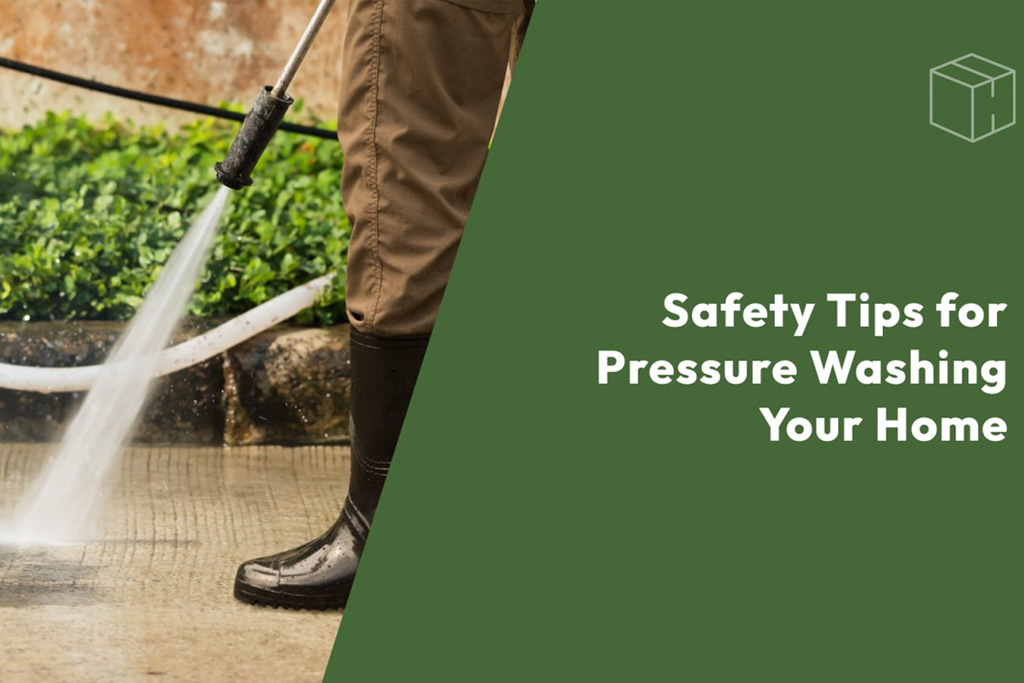Pressure washing is a powerful method for cleaning various surfaces around your home, but it comes with some risks if not used safely. In this blog, we’ll explore essential safety tips to ensure that you can harness the cleaning power of pressure washing while protecting both yourself and your property.
1. Protective Gear
Before starting any pressure washing project, it’s crucial to don the right protective gear. This includes:
Safety goggles to shield your eyes from debris and high-pressure water.
Durable, non-slip shoes to prevent slipping on wet surfaces.
Hearing protection to guard against the loud noise of the pressure washer.
Appropriate clothing to protect your skin from backsplash or spray.
2. Familiarize Yourself with the Equipment
Understanding the pressure washer you’re using is essential. Read the manufacturer’s instructions and become acquainted with the machine’s features, including the various nozzles, settings, and safety mechanisms. Be sure to perform a test run on a small, inconspicuous area to get a feel for the equipment.
3. Maintain Safe Distance
Maintain a safe distance between the pressure washer nozzle and the surface you’re cleaning. The force of high-pressure water can cause injuries and damage if used too closely. Consult the equipment’s manual for guidance on the recommended distance.
4. Use the Right Nozzle
Pressure washers come with different nozzles, each designed for specific tasks. Using the correct nozzle is crucial. For instance, a narrow, high-pressure nozzle is suitable for tough stains on hard surfaces, while a wider, lower-pressure nozzle is better for delicate surfaces to prevent damage.
5. Mind the Angle
Hold the nozzle at a slight angle to the surface you’re cleaning. Directing the water straight on can force contaminants into the material, potentially causing damage.
6. Avoid Electrical Hazards
Water and electricity don’t mix. Ensure that power sources, outlets, and extension cords are dry and safe from water exposure. If necessary, use a ground fault circuit interrupter (GFCI) to prevent electrical accidents.
7. Prevent Chemical Mishaps
Some pressure washing projects may involve chemicals or detergents. Be cautious when handling these substances, following safety guidelines and manufacturer instructions. Store chemicals in a safe place, away from children and pets.
8. Watch for Slippery Surfaces
The process of pressure washing can make surfaces slippery. Be mindful of your footing to avoid falls or injuries. Use non-slip shoes and exercise caution when walking on wet surfaces.
9. Protect Landscaping
Pressure washing can dislodge dirt and debris that may damage your landscaping. Protect your plants, flower beds, and grass by covering them with plastic sheets or wetting them down before starting the job.
10. Professional Assistance
If you’re unsure about operating a pressure washer safely or if the project is beyond your capabilities, it’s advisable to seek professional assistance. A professional pressure washing service has the expertise and equipment to get the job done safely and effectively.
Conclusion While pressure washing is an excellent method for cleaning and revitalizing your property, it must be used with safety in mind. By following these essential safety tips, you can harness the power of pressure washing while protecting yourself, your property, and those around you. Whether you’re tackling a small DIY project or a larger cleaning endeavor, safety should always be a top priority.

